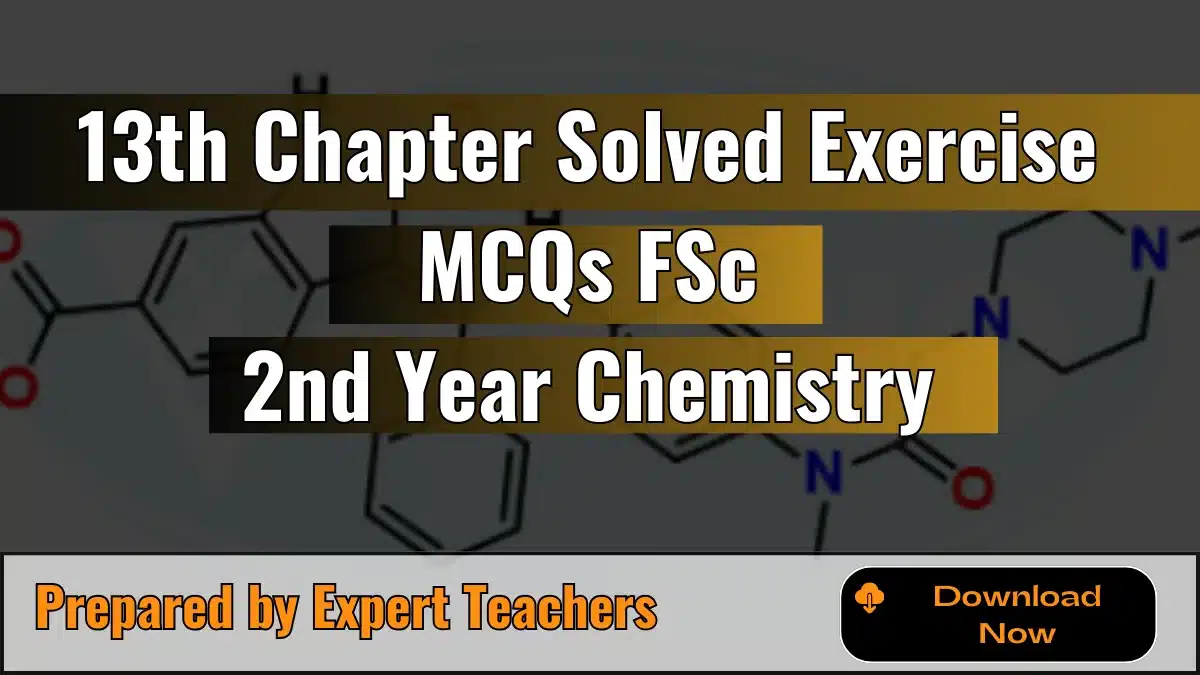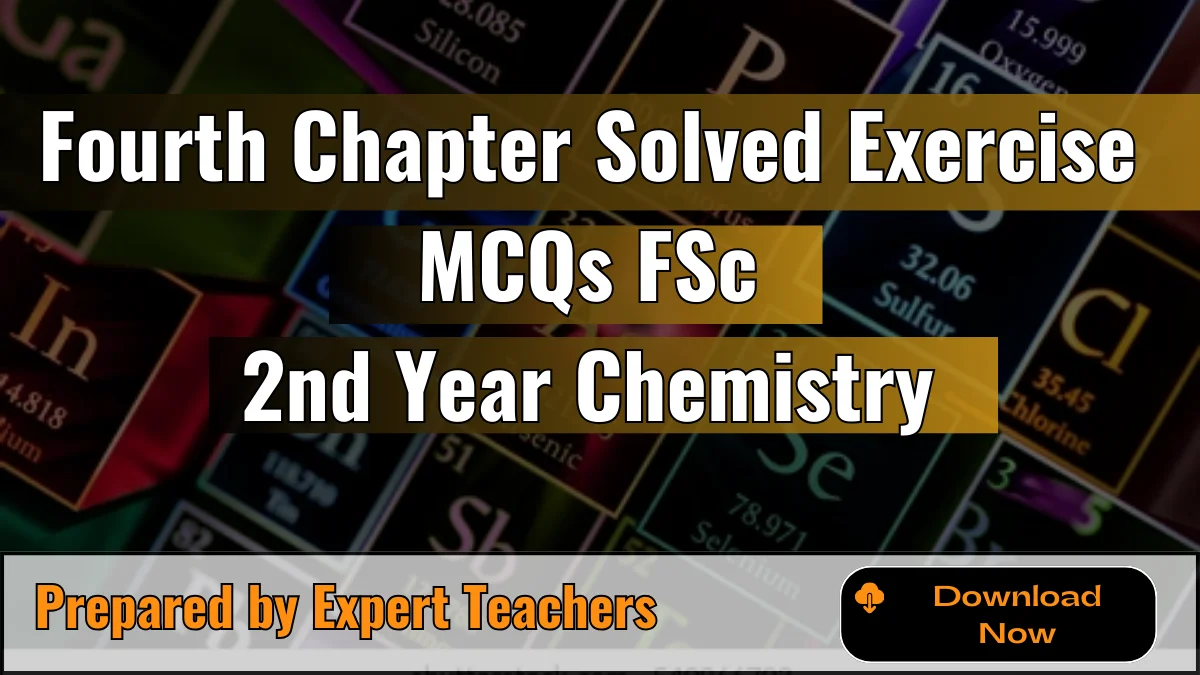Sixth Chapter Solved Exercise MCQs Of FSC Second Year Chemistry
The 6th Chapter Solved Exercise MCQs of FSC 2nd-year Chemistry provides a complete set of solved multiple-choice questions (MCQs). Each MCQ comes with a brief explanation to help you understand the correct answer. These solutions are designed to support students in preparing for their exams, making complex concepts easier to grasp and ensuring a solid foundation for success.
Sixth chapter solved MCQs with explanation
1. Which of the following is a non-typical transition element?
(a) Cr
(b) Mn
(c) Zn
(d) Fe
Explanation: Option (c) is correct. Because Zinc only has one oxidation state (+2) and its d-orbitals are completely filled (3d^10). In contrast, typical transition elements like Cr, Mn, and Fe have multiple oxidation states and partially filled d-orbitals.
2. Which of the following is a typical transition metal?
(a) Sc
(b) Y
(c) Ra
(d) Co
Explanation: Option (d) is correct. Because Transition metals are elements found in the d-block of the periodic table and are characterized by having partially filled d orbitals. Among the given options:
- Sc (Scandium) is a transition metal.
- Y (Yttrium) is also a transition metal.
- Ra (Radium) is an alkaline earth metal, not a transition metal.
- Co (Cobalt) is a transition metal.
So, while both Sc and Y are transition metals, Co is the one typically emphasized in such questions because it is a well-known transition metal with many common properties.
3. f-block elements are also called:
(a) Non-typical transition elements.
(b) Outer transition elements.
(c) Normal transition elements.
(d) None is true
Explanation: Option (d) is correct. Because F block elements are known as inner transition elements because their valence electrons fill the inner f-orbitals, which are inner to the d-orbitals of the transition elements.
4. The strength of binding energy of transition elements depends upon:
(a) number of electron pairs
(b) number of unpaired electrons
(c) number of neutrons
(d) number of protons
Explanation: Option (b) is correct. Because the binding energy of transition elements depends on how many unpaired electrons they have. More unpaired electrons generally mean stronger bonds and higher binding energy in metal complexes.
5. Group VIB of transition elements contains:
(a) Zn, Cd, Hg
(b) Fe, Ru, Os
(c) Cr, Mo, W
(d) Mn, Te, Re
Explanation: Option (c) is correct. Because:
- Zn, Cd, Hg: These are Group IIB elements, not VIB.
- Fe, Ru, Os: These are Group VIII elements.
- Cr, Mo, W: Correctly identifies the elements in Group VIB.
- Mn, Te, Re: (Mn) is in Group VII, (Te) is in Group VI, and (Re) is in Group VIIIB.
6. Which is the formula of tetra ammine chloro-nitro-platinum (IV) sulphate?
(a) [Pt(NH₃)₄ (NO₂)]SO₄
(b) [Pt(NO₂)₂ Cl(NH₃)₄]SO₄
(c) [PtCl(NO₂) (NH₃)₄]SO₄
(d) [Pt(NH₃)₄ (NO₂)Cl]SO₄
Explanation: Option (d) is correct. Because the correct formula of tetra-ammine-chloro-nitro-platinum (IV) sulphate can be written as [Pt(NH₃)₄ (NO₂)Cl]SO₄.
7. The percentage of carbon in different types of iron products is in the order of:
(a) cast iron > wrought iron > steel
(b) wrought iron > steel > cast iron
(c) cast iron > steel > wrought iron
(d) Cast iron = steel > wrought iron
Explanation: Option (c) is correct. Because cast iron has the highest carbon content (2-4%), steel has less (0.02-2%), and wrought iron has the least (less than 0.1%).
8. The color of transition metal complexes is due to:
(a) D-d transition of electrons.
(b) paramagnetic nature of transition elements.
(c) ionization.
(d) loss of s-electrons.
Explanation: Option (a) is correct. Because transition metal complexes show color because of d-d electronic transitions. The d-orbitals split into different energy levels in the presence of ligands, and electrons absorb visible light to move between these levels. The absorbed light determines the color we see.
9. Coordination number of Pt in [Pt Cl (NO2) (NH3)4] is:
(a) 2-
(b) 4
(c) 1
(d) 6
Explanation: Option (d) is correct. Because the coordination number is described as the number of ligands attached to the central atom. Platinum (Pt) is the central metal atom in this complex, and it is coordinated to one chloride (Cl) ligand, one nitrite (NO2) ligand, and four ammonia (NH3) ligands, resulting in an overall coordination number of 6.
10. The total number of transition elements is:
(a) 10
(b) 14
(c) 40
(d) 58
Explanation: Option (b) is correct. Because







Leave a Reply